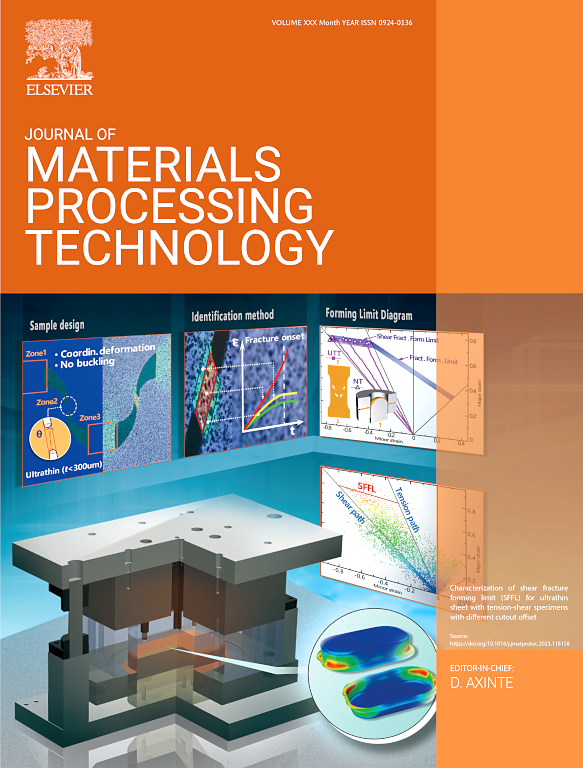Effect of current density on electrochemical machining process of laser powder bed fusion manufactured Inconel 718
IF 6.7
2区 材料科学
Q1 ENGINEERING, INDUSTRIAL
Journal of Materials Processing Technology
Pub Date : 2025-01-27
DOI:10.1016/j.jmatprotec.2025.118748
引用次数: 0
Abstract
Electrolytic jet machining (EJM) has been widely recognized as one of the effective methods for the surface post-processing of the laser powder bed fusion (LPBF)-components. However, this concept remains challenging due to the limited machining allowance of the LPBF-components and the complexed anodic dissolution behavior, which determine the dimensional accuracy and surface quality of the machined workpiece, respectively. In this work, high current densities ( ≥ 100 A/cm2) are novelly employed to investigate the leveling ratio and transpassive dissolution behavior of LPBF-Inconel 718 for the first time. Compared to 100 A/cm2, 200 A/cm2 improves the leveling ratio to 58.9 % from 57.1 % when the surface roughness is less than 1 µm. However, the high current density up to 200 A/cm2 still cannot inhibit the selective dissolution of the inhomogeneous microstructure, which limits further reduction of the surface roughness. A high current density leads to a rougher micro-surface on horizontal section than low current density, caused by more Nb oxides attached on the horizontal section at high current density generate from continuously distributed Nb-segregation γ phase along the machining depth direction. In addition, the local fine dendrites on vertical section result in a smooth EJM-surface, owing to the relatively uniform dissolution. This investigation provides systematic understanding of leveling process and transpassive dissolution behavior under high current density with complex surface and microstructure, which can further promote synergetic improvements of the surface integrity and dimensional tolerance through controlling the EJM parameters.
求助全文
约1分钟内获得全文
求助全文
来源期刊

Journal of Materials Processing Technology
工程技术-材料科学:综合
CiteScore
12.60
自引率
4.80%
发文量
403
审稿时长
29 days
期刊介绍:
The Journal of Materials Processing Technology covers the processing techniques used in manufacturing components from metals and other materials. The journal aims to publish full research papers of original, significant and rigorous work and so to contribute to increased production efficiency and improved component performance.
Areas of interest to the journal include:
• Casting, forming and machining
• Additive processing and joining technologies
• The evolution of material properties under the specific conditions met in manufacturing processes
• Surface engineering when it relates specifically to a manufacturing process
• Design and behavior of equipment and tools.
 求助内容:
求助内容: 应助结果提醒方式:
应助结果提醒方式:


